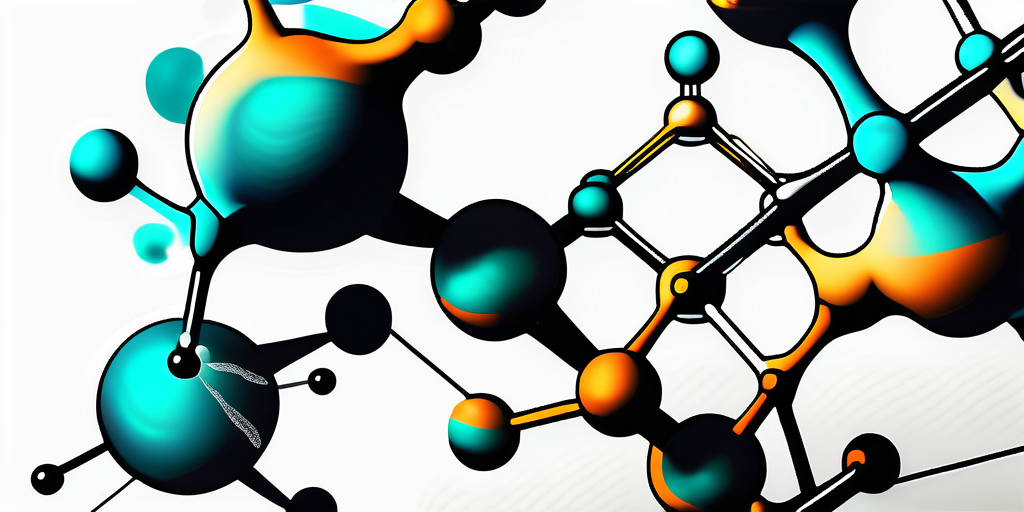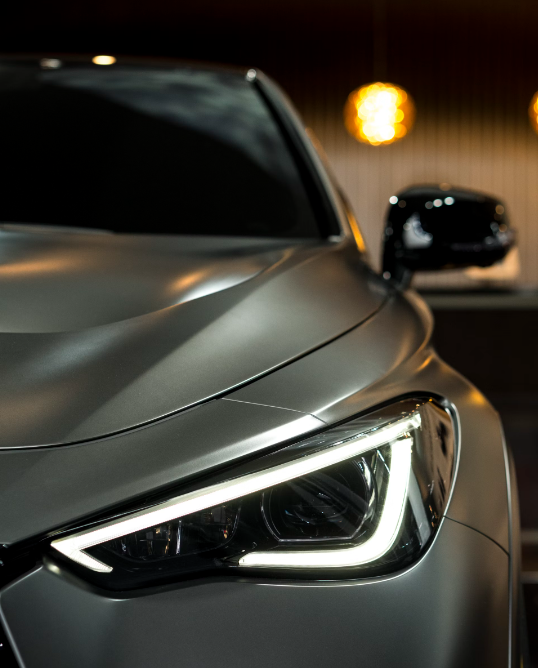What is Nanocoating? Explained by AvalonKing
Nanocoating is a revolutionary technology in the world of car detailing that has gained significant traction in recent years. It is a type of surface treatment that involves the application of extremely tiny particles to create a new surface. The term 'nano' refers to the nanometer, a unit of measurement that is one billionth of a meter. This gives an indication of the minuscule size of the particles used in nanocoating.
The primary purpose of nanocoating in car detailing is to provide a protective layer to the car's surface. This layer shields the car from various elements that can cause damage, such as UV rays, dirt, and grime. The result is a car that not only looks cleaner and shinier but also requires less maintenance.
Understanding Nanocoating
Nanocoating is a process that involves the use of nanoparticles to create a protective layer on a surface. These nanoparticles bond with the surface at a molecular level, creating a coating that is extremely thin yet incredibly durable. This coating is often only a few nanometers thick, hence the name 'nanocoating'.

The properties of the nanocoating can vary depending on the type of nanoparticles used. Some nanocoatings are designed to be hydrophobic (water-repelling), while others may be oleophobic (oil-repelling), anti-corrosive, or UV-resistant. The specific properties of the nanocoating are determined by the needs of the application.
How Nanocoating Works
Nanocoating works by creating a barrier between the car's surface and the elements. When the nanoparticles are applied to the surface, they bond with the surface molecules, creating a protective layer. This layer is so thin that it is virtually invisible to the naked eye, yet it is incredibly durable and resistant to various types of damage.
The nanocoating also fills in any tiny imperfections on the surface, creating a smooth and even finish. This not only enhances the appearance of the car but also makes it easier to clean, as dirt and grime cannot easily adhere to the smooth surface.
Benefits of Nanocoating
One of the main benefits of nanocoating is its durability. Unlike traditional wax or sealant treatments, which need to be reapplied regularly, a nanocoating can last for several years. This makes it a cost-effective solution for maintaining the appearance and condition of a car.
Nanocoating also offers superior protection against a variety of elements. It can protect the car's surface from UV damage, which can cause fading and discoloration. It can also repel water and oil, preventing stains and making the car easier to clean. Furthermore, it can provide protection against minor scratches and abrasions.
Types of Nanocoating
There are several types of nanocoating available, each with its own unique properties and benefits. The most common types used in car detailing are ceramic nanocoating and glass nanocoating.
Ceramic nanocoating, also known as nano-ceramic coating, is made from ceramic nanoparticles. It is known for its high durability and resistance to heat, making it an excellent choice for protecting the car's paintwork. Glass nanocoating, on the other hand, is made from silica (glass) nanoparticles. It is known for its exceptional hydrophobic properties, making it excellent at repelling water and preventing water spots.
Ceramic Nanocoating
Ceramic nanocoating is a type of nanocoating that uses ceramic nanoparticles. These nanoparticles bond with the car's surface to create a hard, durable coating. The ceramic coating is highly resistant to heat, which makes it an excellent choice for protecting the car's paintwork from the damaging effects of the sun's UV rays.
One of the unique properties of ceramic nanocoating is its ability to enhance the color and shine of the car's paintwork. The ceramic particles fill in any tiny imperfections on the surface, creating a smooth and even finish. This results in a deep, glossy shine that can make the car look like it's just come out of the showroom.
Glass Nanocoating
Glass nanocoating is a type of nanocoating that uses silica (glass) nanoparticles. These nanoparticles bond with the car's surface to create a hydrophobic (water-repelling) coating. This makes it excellent at preventing water spots, as water simply beads up and rolls off the surface.
Like ceramic nanocoating, glass nanocoating also enhances the appearance of the car. It creates a high-gloss finish that can make the car look cleaner and shinier. Additionally, it can also provide some protection against minor scratches and abrasions.
Application of Nanocoating
The application of nanocoating is a meticulous process that requires careful preparation and attention to detail. The first step is to thoroughly clean the car's surface to remove any dirt, grime, or existing coatings. This is typically done using a clay bar or a chemical cleaner.
Once the surface is clean, the nanocoating can be applied. This is usually done using a microfiber applicator pad. The nanocoating is spread evenly over the surface, then allowed to cure for a certain period of time. Once the coating has cured, it forms a hard, durable layer that provides long-lasting protection.
Preparation for Nanocoating
Before applying a nanocoating, it's crucial to thoroughly clean the car's surface. This ensures that the nanocoating can bond properly with the surface, providing the best possible protection. The cleaning process typically involves washing the car, using a clay bar to remove any embedded contaminants, and then using a chemical cleaner to remove any existing waxes or sealants.
It's also important to ensure that the car's surface is completely dry before applying the nanocoating. Any moisture on the surface can interfere with the bonding process, potentially reducing the effectiveness of the nanocoating. Therefore, it's recommended to wait at least 24 hours after washing the car before applying the nanocoating.
Applying the Nanocoating
The application of the nanocoating is a delicate process that requires a steady hand and attention to detail. The nanocoating is typically applied using a microfiber applicator pad. The coating is spread evenly over the surface, ensuring that all areas are covered. It's important to work in small sections to ensure an even application.
Once the nanocoating has been applied, it needs to cure for a certain period of time. The curing process allows the nanoparticles to bond with the surface, creating a hard, durable coating. The exact curing time can vary depending on the specific product, but it typically ranges from a few hours to a few days.
Maintenance of Nanocoated Surfaces
While nanocoating provides long-lasting protection, it still requires some maintenance to keep it in optimal condition. This typically involves regular washing to remove any dirt or grime, and occasional touch-ups to maintain the coating's protective properties.
It's also important to avoid using harsh chemicals or abrasive materials on the nanocoated surface, as these can damage the coating. Instead, it's recommended to use pH-neutral cleaning products and soft, non-abrasive cloths for cleaning.
Regular Cleaning
Regular cleaning is essential for maintaining the appearance and protective properties of a nanocoated surface. This involves washing the car regularly to remove any dirt, grime, or other contaminants that may have accumulated on the surface. It's recommended to use a pH-neutral car wash soap, as this will not harm the nanocoating.
When washing the car, it's best to use a soft, non-abrasive cloth or sponge to avoid scratching the surface. It's also important to rinse the car thoroughly to remove all soap residue, as this can dull the finish of the nanocoating.
Touch-Ups
Over time, the nanocoating may start to show signs of wear and tear, such as minor scratches or a reduction in its hydrophobic properties. When this happens, it's necessary to perform a touch-up to restore the coating's protective properties.
Touch-ups involve applying a small amount of nanocoating to the affected area, then allowing it to cure. This can help to fill in any minor scratches and restore the coating's hydrophobic properties. It's recommended to perform touch-ups as needed to keep the nanocoating in optimal condition.
Conclusion
Nanocoating is a revolutionary technology in car detailing that offers superior protection and enhanced appearance. By creating a hard, durable coating at a molecular level, it provides long-lasting protection against a variety of elements, making it a cost-effective solution for maintaining the appearance and condition of a car.
Whether you choose a ceramic nanocoating for its heat resistance and color-enhancing properties, or a glass nanocoating for its exceptional hydrophobic properties, you can rest assured that your car is well-protected. With proper application and maintenance, a nanocoating can keep your car looking its best for years to come.
Ready to give your car the ultimate protection and shine? Look no further than AvalonKing, where we offer a premium selection of ceramic coatings, car shampoos, and other top-quality cleaning products. Trusted for years, our products are designed to keep your vehicle looking pristine. Check out our products today and experience the AvalonKing difference for yourself!










